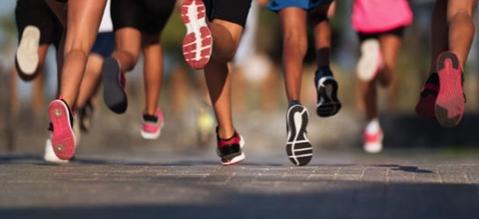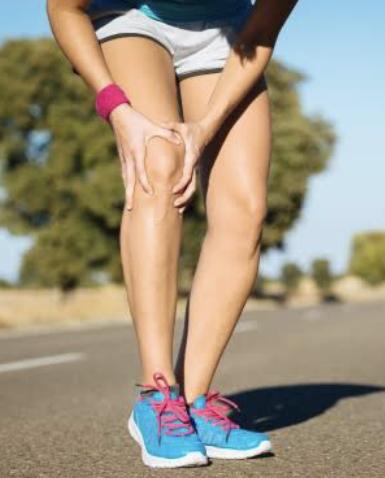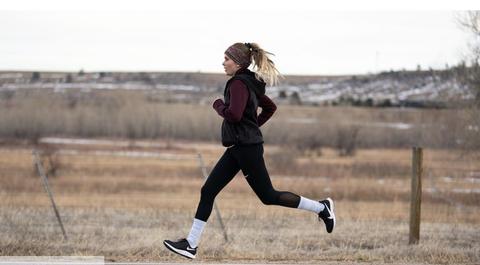
If you’re a runner (elite or recreational) you can identify with perhaps “running the gauntlet” a little when training. It’s a wonderfully addictive sport and as far as km’s go you can feel like a kid in a candy store who has saved a tonne of pocket money. We discover new trails, run longer/faster/harder and it almost becomes a game of ‘running roulette’: how far can we go and still tolerate the impact?
Maybe not straight away but, inevitably, we fall victim to injury and niggles at some point to varying degrees which can be multifaceted in cause:
Perhaps you’ve spiked your kms too quickly, or you have not been using recovery strategies (poor sleep, poor nutrition and little rest). You may have slacked off on your running rehab/strength/mobility regimes, or sometimes you may have just been unlucky on a trail or training session.
It may in fact be a combination of a few all of the above but the reality is you’ve developed an injury and you’ve been side lined from running and ended up in the pool, on the bike or just with ice pack and Netflix on the couch.
It’s easy to get caught up in feeling frustrated, down trodden, hopeless and even want to throw in the towel to this wonderful sport altogether…
BUT
There is hope! (Even when sitting with a bag of frozen peas strapped to your leg) watching your mates add sessions to Strava. We can recover from injuries, even come back stronger. We can even prevent their prevalence by implementing some simple and consistent strategies.
HERE IS WHAT I MEAN:
Firstly, runners are motivated, tenacious and driven in nature. this is a blessing but can be a curse also. We run hard, and try to apply this mentality to most things we do, even healing which can sometimes lead to us trying to bounce back (in my personal and clinical experience) TOO quickly.
The only thing worse than a running injury, is a second injury which occurs in close succession due to not perhaps putting all the rehab tools in place. If I had a dollar for every runner (myself included) that bounced back a too quickly, and had a repercussion niggle/injury, I’d be able to nab a pair of carbon plated performance shoes.
The last thing any runner needs is to get through a injury and then rebound back onto the couch with more frozen peas and more frustrated than ever.
In a few short words, this is NOT IDEAL.

So how do we get back into running without ending up snowballing down the slippery slope of an injury spiral?
Every injury is very different, and every runner is unique and has their own levels of ‘load tolerance’. Stress fractures, tendon injuries, sprains (to name a few) are all managed very differently in terms or rehab but there are some common factors that can be pooled together to give a nice return to running plan.
Firstly, it is important to factor in the time off running impact you’ve had. Some bone injuries may be 8-12 weeks, some tendons and sprains may be 2-6, but these are just numbers and there is certainly no “time off recipe fix.” Joint injuries can take longer and more patience is often required. Even a muscle strain can be stubborn and end up being longer than expected if not looked after. It really depends on the person, their training, their physiology, their past history and their specific injury. It is an incredibly personal and individual process…..
HOWEVER!
There is PLENTY we can do do make transitioning back into running smoother and more injury averse.

Here is what I recommend!
1) STRENGTH: This is crucial and to be separated into two parts. a) Whole body Pilates/functional strength training to supplement your training program ensuring it is respecting the injured area. This keeps the mind and body moving and strong so long as it is not stressing the injury site. I can highly recommend trying an online Pilates class with me. no matter what your injury may be. b) Injury specific strength rehab (as guided by a physiotherapist)
2) A GRADED WALK JOG PROGRAM Starting with pain free walking (that builds to 30-45 mins) pre walk/jog is always part of my return to running plan. (There is an example plan below of a walk jog progression program.)
3) CROSS TRAINING Biking, swimming, Pilates and gentle walks (pending they do not provoke your injury) are brilliant forms of conditioning to use to stay healthy when injured. These can develop good habits for future training schedules and I strongly believe they can be a brilliant addition to any running program to keep fit with less impact.
4) NUTRITION, SLEEP, STRESS: Good wholesome fuel (even when not running) is key. I am far from a nutritionist but know personally how much faster the body can bounce when it’s getting regular nourishment. There is good research on the benefits of sleep on recovery especially when healing from an injury. Also the importance of stress on your systemic wellbeing should be factored in and prioritised also to try and maximise your injury management as a whole. Breathing techniques, music and meditation could be something to try to and settle into the recovery process.
Here is an example return to running plan:
This plan was made for a client who developed a stress response in their (tibia) which is an injury that often presents like “shin splints” or “medial tibial stress syndrome.” This client presented with sharp lower shin pain and could not hop. Once this diagnosis was confirmed via MRI, we could start the rehab plan. They did not need any form of casting or brace, just rest, recovery, and then gentle reload.
This client was incredibly diligent with their recovery program and had 6 weeks of just swimming, pilates and foot and ankle strength. Once their pain was under control we added specific calf strength (which we have kept throughout the rehab program.)
This client added some short alternate day walks at week 8 and continued with full body strength work (pilates), specific rehab (for the shin and lower limb area) and they also continued cardio sessions in the pool/ocean.
At week ten, we performed a hop test: 10 hops on the affected leg to see if mechanics were sound and to see if they were completely asymptotic. The client was still not “perfect” the lower leg. It felt weak and they were still “very aware” of the affected area.
We gave the leg another two weeks, and then re-tested. The client was now 0 pain on a hop test, and looked and felt more comfortable and confident. For some injuries it may be OK to start loading when symptoms are not fully resolved, but with bone stress, we don’t mess about. We get them right and more often than not, with the right graded approach we can get back to full kms within 6-8 weeks 9pending their previous kms)

Here’s the fun part: The walk jog progression!
This program is always tailored to each patient slightly differently. Here is a good solid program that I have had lot’s of success with (personally and clinically).
Firstly, I usually recommend a flat, relatively soft surface (not sand) when commencing a walk jog program. Eg: a grass footy oval, a beach path, or a trail surface. Keeping in mind soft surfaces will often not suit tendon rehab not trauma based injuries due to their slightly unstable nature. With bone stress return to running plans, a grassy oval is perfect.
It looks like this:
WALK/JOG PROGRAM:
| walk | jog | reps | Pain after /10 | Pain next day /10 | |
| Wk 1 | 4mins | 1min | 6 reps | ||
| Wk 2 | 3mins | 2mins | 7 reps | ||
| Wk 3 | 1mins | 4mins | 8 reps | ||
| Wk 4 | 2mins | 10mins | 3 reps | ||
| Wk 5 | 2mins | 15mins | 2 reps | ||
| Wk 6 | na | 30mins | 1 rep |
* This plan commences after the client is able to walk pain free for 30mins, and perform 10 hops on the affected leg with solid mechanics
*All jogs are slow and focus on form and staying relaxed “easy talking pace” is what I recommend.
*Each week the program is performed 3 times a week with a rest day/cross training between. Eg: Monday, Wednesday, Saturday.
*A warm up and cool down of 5mins pre and post walk/jog program is advised.
*In some cases, you may be able to skip a week above and jump to the next level, but this is the plan that has minimal hiccups and has worked clinically very well, especially in this case of a bone stress injury.
* Pain: should be 2 or less during and straight after each run, as well as the next day. This guides your load management tolerance. If you start to creep up to a 3-4 I advise seeing your health practitioner to check your symptoms/progress.
This guide is a great tool to get you back up and running when you’ve been stuck in the pool for 6 or more weeks> the plan may look very different if you have only been sidelined for a few weeks. You may be able to use the above and skip every second week if pain stays under 2 for example.

I am not a chef and don’t have a secret recipe that my great gran has passed down, I am also not a wizard that has a running spell formula…
BUT,
I am a runner and a physio, and (with lots if trial and error) I can confirm these injury management strategies and this graded walk/jog progressive plan can make or break your rehab process. This program can set you up to be a stronger runner overall on the flip side.
In running, like in life, there is rarely a magic bullet or a quick fix you can rely on to pull you out of tough situations. BUT you definitely reap the benefits of the hard work you put in and this relates to injury rehab and recovery.
If you do ALL the small things, (as tedious and boring as they may seem) you WILL get better. I also am a firm believer that if you learn from any mistakes you made in the past which resulted in injury, there is always a silver lining. You become wiser in training, you can learn new strength routines, you may slow down a little and can even start to enjoy some new cross training sessions that you can incorporate into your regular schedule….
It’s hard to embrace the rehab process at the time, but one thing I see time and time again is:
Injured runners who persevere and rehab properly find a new appreciation for this incredible sport and come back stronger and more resilient than ever before!
If you are a runner and have an injury and are feeling like you need guidance, or simply want to try a strength rehab session, feel free to email me at anytime.
I GOT YOU!
Alice Baquie – Physiotherapist & Clinical Pilates Instructor
Website: https://alicebaquie.com.au/Email: alice@alicebaquie.com.au
Instagram: @alicebaquie